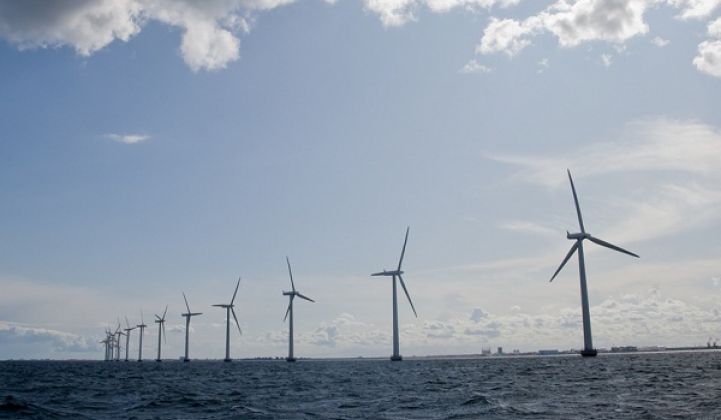Cape Wind, the long-sought and long-fought offshore wind farm planned for Nantucket Sound, got a boost this week when state regulators approved a power purchase agreement for more than a quarter of the project’s energy.
Project developers already have a deal in hand to sell 50 percent of the power to National Grid, so the newly approved PPA with NStar for 27.5 percent of the power puts Cape Wind well on the way to locking up the customers it needs -- a key to unlocking financing to build the controversial wind farm.
“Taken together, these two PPAs provide Cape Wind with the critical mass to continue securing project financing,” Theodore Roosevelt IV, managing director of Barclays and Cape Wind’s financial advisor, said in a statement put out by the developers.
Cape Wind, now fully approved, has had to struggle on multiple fronts to turn the vision of a 130-turbine, 420-megawatt project into reality, waging public relations and legal battles against opponents who have cited environmental, air traffic, cultural and economic concerns.
One of Cape Wind’s biggest fights was over the National Grid PPA. The parties struck a deal in May 2010, and it was approved by regulators in December that year, but it wasn’t until December 2011 that the Massachusetts Supreme Judicial Court upheld the PPA.
Cape Wind had struggled to find a buyer beyond National Grid, but as Offshore Wind Wire reported, it caught a big break earlier this year:
In 2010, utilities NStar Electric Company, NStar Gas Company, and Western Massachusetts Electric Company along with holding company parent Northeast Utilities petitioned the Massachusetts Department of Public Utilities (DPU) for approval of a proposed $17.5 billion merger. After over a year of litigation at the DPU, last week Governor Deval Patrick announced that his administration had negotiated an agreement to settle the merger case. Under the proposed settlement, the utilities would be allowed to merge under a series of specified conditions. These conditions are designed to create enhanced ratepayer benefit, and include a one-time credit to utility customers totaling $21 million.
The settlement conditions would also require the merged utility to enter into a contract to buy 27.5 percent of the electricity to be produced by the Cape Wind offshore wind project, or 129 megawatts, for a 15-year term.
The deal with NStar, like the one with National Grid, initially sets the price per kilowatt-hour of electricity at 18.7 cents, rising by 3.5 percent annually.
“This contract is another step forward in fulfilling the statutory renewable energy and greenhouse gas emissions reduction goals set forth in the Green Communities Act,” DPU Chair Ann Berwick said in a statement. “It is clear that the Cape Wind facility offers significant benefits that are not currently available from other renewables. This contract supports the largest renewable energy project proposed in New England while providing protections to consumers against the volatility of fossil fuel prices.”
***
Editor's note: This article is reposted in its original form from EarthTechling. Author credit goes to Pete Danko.



